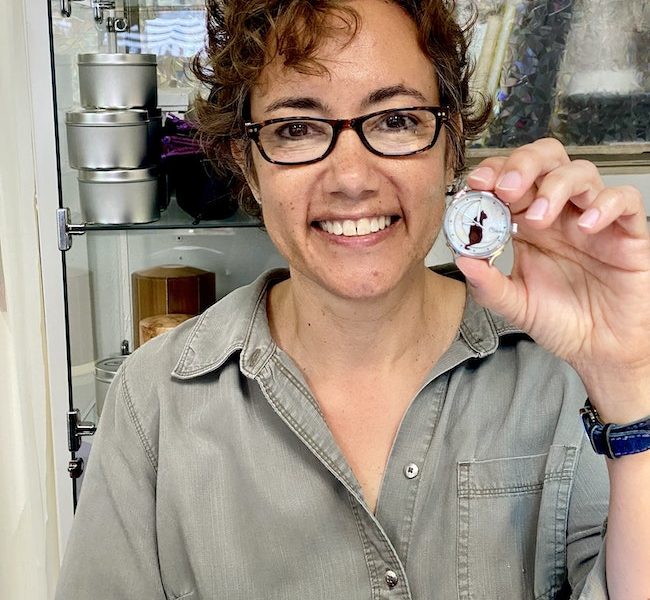It wasn’t that long ago when local, regional, and global supply chains were boringly predictable. A local business would place an order and whether that was to a supplier down the street, in another state, or across the ocean, trucks, trains, and container ships would embark on their journeys to fulfill those orders. Sure, there were challenges, and even systemic flaws, but by and large the process worked.
Then came COVID-19.
This past Friday, the Springfield Chamber of Commerce held a virtual economic workshop with guest speakers from businesses to discuss how supply-chain problems are affecting their business and how they are going about solving problems.
Representatives from a one-person artisanal watchmaker, a tech-savvy wine and food delivery company, and a big-box hardware retailer spoke about the difficulties they have ordering and stocking supplies. They all agreed that the new mantra for them and other business leaders has become: “What new challenge are we going to face today?”
What follows, in their own words, are both the unique challenges to their business and the universal problems facing every retailer heading toward the end of 2021. Each of these leaders also discussed how they have adapted and, most importantly, adopted a creative mindset.
Celeste Wong, Owner/designer
This high-end watchmaker in Springfield blends the precision of Swiss movement watches with custom art. Wong, the owner and founder, put her engineering degree to good use in both design and function. She has trademarked the name and now sells her timepieces locally and nationally through online retailers such as Amazon.
 Celeste Wong said business owners who demonstrate their passion can build loyalty with customers. EMMA ROUTLEY/CHRONICLE FILE PHOTO
Celeste Wong said business owners who demonstrate their passion can build loyalty with customers. EMMA ROUTLEY/CHRONICLE FILE PHOTO
“Obviously, time has great meaning to me, both in my creations, but also in my business,” said Wong. “So, dealing with the increased time to receive key parts has been a huge issue for me. I order all my watch movements from Switzerland, and what used to take about one month to receive a shipment now takes at least four months.”
In addition to long waits for parts, Wong also pointed out that any interruption in one aspect of the supply chain can reverberate in other areas.
“I love to use abalone shells in my designs, and I had a great supplier who literally searched the world over for pristine shells. However, with COVID-19 travel restrictions, he was basically shut down and so my entire source of abalone was curtailed.”
To combat the supply delays and shortages, Wong has adjusted her timelines and now sources materials closer to home. She began placing orders in the summer to meet holiday season demand, and she’s also found suppliers on the west coast who can provide her with the much sought-after rainbow-colored abalone shells.
“It’s all about being patient, but also being creative,” said Wong. “In some ways, I’m lucky because I have a clientele that is willing to wait for my watches, but if I didn’t pour my heart and soul and passion into each piece, then they wouldn’t want to wait. I think for any business owner – especially right now – your passion has to shine through so that customers are willing to wait a little longer.”
Todd Edman, BitCork
Edman is already disrupting the supply chain with the food-and-wine delivery company he co-founded. BitCork connects restaurants with artisan wineries by matching ready-to-deliver inventory and no order minimums with delivery any day of the week and an eco-friendly method in which the last mile of delivery is completed by bike courier.
Edman’s ultimate vision is to reduce or remove massive warehousing so that product isn’t lying around waiting to be delivered.
“Right now, the supply chain for food is not efficient,” he says. “For example, it costs about 35 cents to grow a head of lettuce, around 45 cents to ship it to a warehouse, and then another 75 cents to ship it to the store. If we can re-think that model and remove or shift that warehouse step, we could become much more cost effective.”
Edman also pointed out that warehousing creates an inefficient and uneven playing field. “At warehouses up and down the west coast, there were many cases during the height of the pandemic where facilities were packed with rotting food, while others were empty.”
A big part of the problem, as Edman sees it, is the human factor throughout the supply chain. He noted that at many ports and warehouses, freight brokers are key employees who manage the movement of goods. And they can get ill.
Edman and others in the industry are inserting more technology into the process. By digitizing freight pallets of food or goods, product can be seamlessly shipped in and out of facilities without being beholden to the human factor.
“In some ways, there have always been inefficiencies in the way we move stuff around the globe,” said Edman. Yet, to his way of thinking, the pandemic has shown that technology can step in when supply chain constrictions result from a breakdown in employee shortfalls or shortages.
Scott Lindstrom, Jerry’s Home Improvement Center
Lindstrom, COO of Jerry’s Home Improvement Center, discussed the challenges that the employee-owned retail organization has dealt with and continues to wrestle while heading into the holidays.
“For us and our 500+ employees, the pandemic has been quite a rollercoaster. During the first month of the pandemic, all our sales were down, but then as people continued to stay at home and tackle home improvement projects, it exploded.”
That explosion of demand has not abated and, as a result, Lindstrom and his team have had to respond to unstable and unpredictable costs.
“Much of our products come from overseas, and it’s been nothing short of amazing how pricing has increased in the last 18 months,” he said. “A container used to cost us $3,000 before the pandemic, now it costs $24,000. Labor shortages and container shortages are a huge part of that problem and the key reason consumer costs have gone up.”
Even as some material costs like lumber have started to come down, others continue to remain high, such as copper and resin for plastics.
Added to that, the labor shortage and resource scarcity continue unchecked, according to Lindstrom.
“This summer, where we would normally have about 200 job applications come in per month, we only had about one. Whether it’s been people choosing to stay at home, or those who job flip for higher wages, it’s been a constant challenge. Supply issues and employee shortages kind of force retail to be creative and adaptive. My team and I say every morning, ‘what’s it going to be today?’”
Lindstrom credits Jerry’s loyal customer base for being flexible and patient and his team for continually thinking outside the box to find solutions.
“We used to have a couple of main tool suppliers, but since the pandemic, we’ve branched out to others. The thought being that if you can’t get a hammer from your usual vendor, you have a fallback.”
At the conclusion of the talk, the speakers were asked when the supply chain and employment problems might end. While their perspectives varied somewhat, all speakers came to a similar conclusion: the fundamental issues driving supply chain and labor challenges will remain throughout 2022.
And while this provided a slightly pessimistic end to the talk, all three panelists were optimistic that the passion, intelligence, and hard work of retailers everywhere would persevere.
Email: [email protected]







